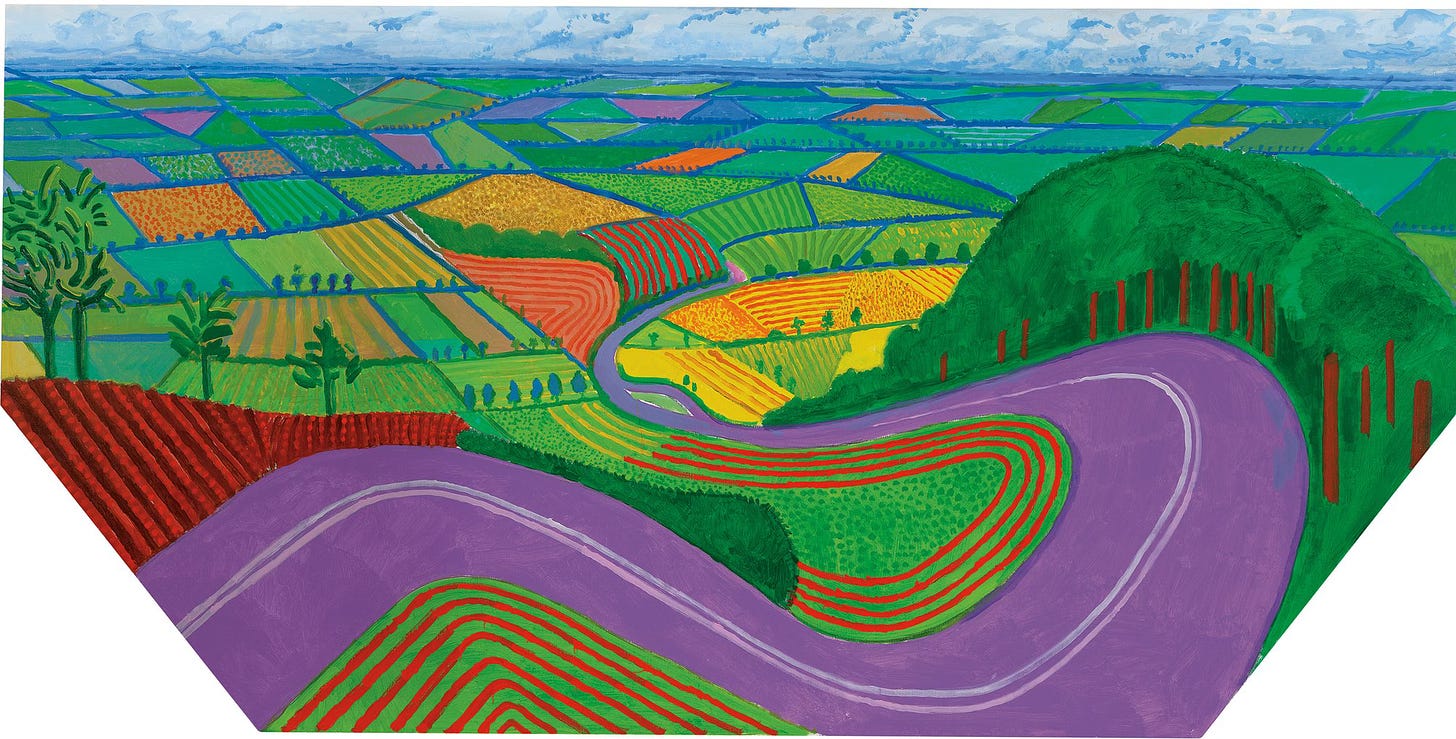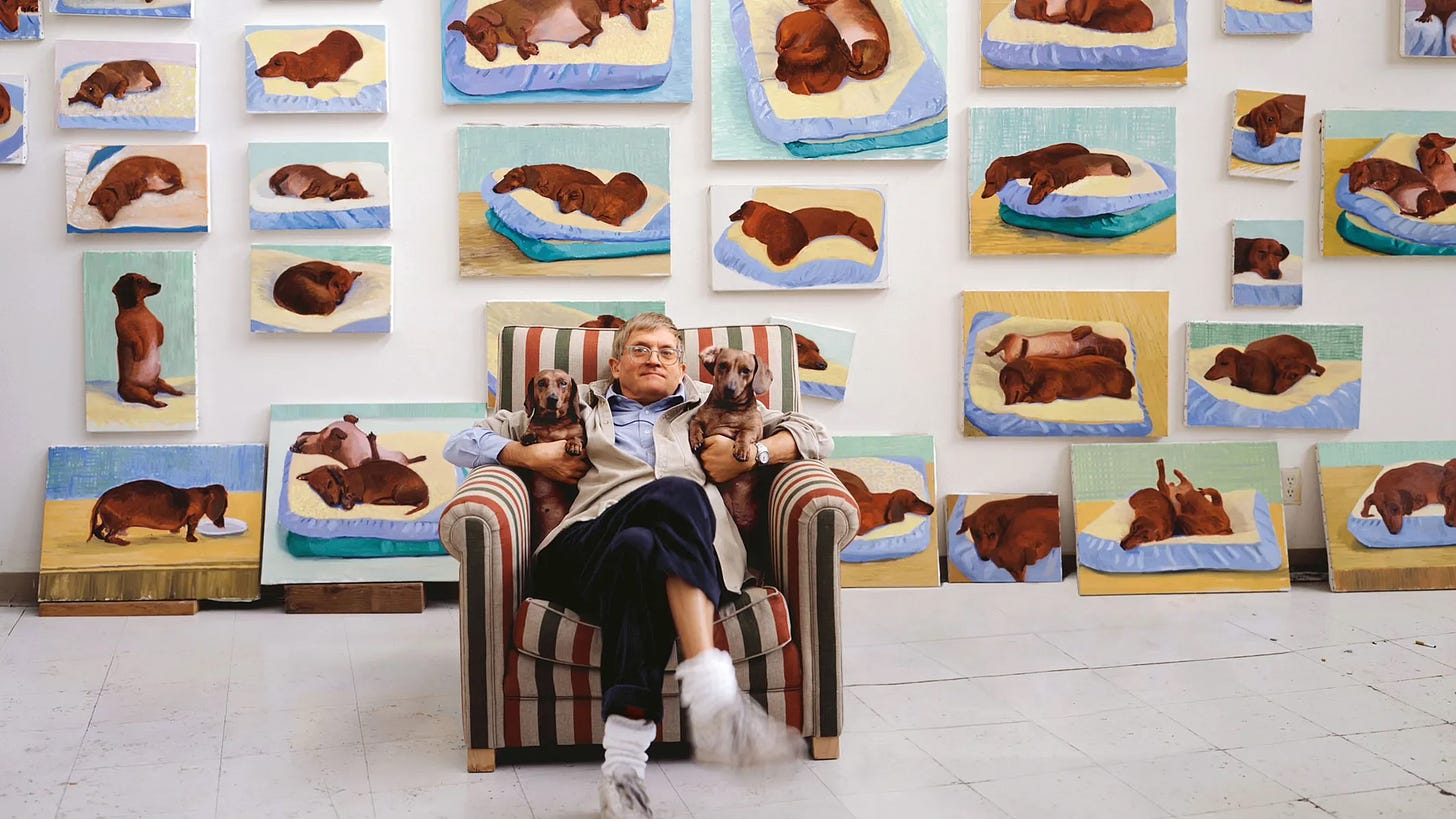Day 7. Kicking Off Our Week of Delight!
Where we put our attention matters.
Hellloooo Grown-Ups Table friends. Now, this is a delight. This whole darn thing. You are a delight. Truly. As things continue to be tough around the world, I’m so happy we’re here drawing together for 10 minutes every day. The tiniest seeds can sprout the most gigantic trees.
A quick recap of Week 1, before we start on week 2:
What did we learn together in Week 1?
Doodles are magic! And they are drawings, too!
It’s good to stretch our wrists before we draw.
Drawing helps us focus, settle into our bodies and process our emotions.
Think with our hands!
Drawing can be so many things - even simply circles on a page.
Process over outcome!
Different strokes for different folks. Some people loved making the Miró-inspired automatic drawing while others preferred the Agnes Martin line doodle. One thing’s for sure, we won’t always like everything we try. But only through trying new things do we discover what we gravitate towards and away from, push through resistance and our limiting narratives, gather new tools for our art bin, and learn.
Breathe.
AND! TECH SUPPORT. If you are confused about using this platform, trust you are not alone! This FAQ we created for the GUT’s 30-Day Drawing Habit should help.
is here to help you in the comments and chat. If all that fails, email us at Community@DrawTogether.Studio and we’ll figure it out together. I got you.
What will we learn in Week 2?
In week two, we’re shifting away from the internal and focusing more on the external. We will use our powers of attention, care, connection and gratitude to celebrate and encourage moments of joy through drawing.
Ready? Me, too.
Let’s do this.
Week 2. Drawing Delights!
This is one of my favorite drawing practices. It opens up my eyes and mind and gets me feeling more joyful. I could use it right now. Maybe you could, too.
Why delight??
Okay, so who’s read Ross Gay’s The Book of Delights? :raises hand:
For the uninitiated, several years back, poet Ross Gay spent one year writing about a delight a day. These short essays (or “essayettes”, as he calls them) celebrate something small and overlooked that brings him joy: a 90s pop song, bees, carrying a tomato seedling on board a plane, lying down in public, gardening… Reading these essayettes, his delights become yours. (Here’s a lovely interview with Ross Gay with NPR’s Ari Shapiro.) And here is Ross Gay talking about delights, and his book:
After reading Ross Gay’s delights, you begin noticing more delights of your own. Small moments of overlooked delights are happening all around you, to you, within you, all the time.
When I first read Ross’ book, I was having a hard time. Despite being the middle of summer when things are supposed to sunny, my life felt dismal, overwhelming, and like I was drowning in demands. I wasn’t excited about anything, really. For some reason, one afternoon, I was pulled back to Ross’ Book of Delights. I threw down my to do list, plopped my butt in the sun, cracked open his book, and read a bunch of his essayettes. (They are short, only a few pages each.) Two things happened: 1. I felt lighter, less up in my head (thank you, Ross!) 2. I was struck by how similar his essayettes are to drawing in terms of his process and attention.
Here’s how Ross Gay’s delight is similar to the practice of drawing.
Process: Gay’s short essays have a starting point, but he quickly meanders into deeper, unexpected territory. In his essay Stacking Delights, he says he writes, “to wonder about it with a pen and a notebook.” That’s what we do when we draw! We have a loose idea of what we are going to make. But rarely do we know where the drawing of it will lead. Let go of expectations, and a drawing will become something far richer than we expect. The appreciation of a subject happens in the doing, in the process, not in the thinking of doing it, or in the finished work. (Process over outcome, GUT peeps!)
Attention: In his preface, Gay writes:
“It didn’t take me long to learn that the discipline or practice of writing these essays occasioned a kind of delight radar. Or maybe it was more like the development of a delight muscle. Something that implies that the more you study delight, the more delight there is to study… I felt my life to be more full of delight. Not without sorrow or fear or pain or loss. But more full of delight. I also learned this year that my delight grows — much like love and joy — when I share it.”
This is exactly what I mean when I say “Drawing is looking and looking is loving.” (Yes, that is a link to my TED talk, which you might want to watch if you haven’t, if only to know more about who leads the Grown-Ups Table, and why I care so much about drawing.)
When we look closely at something like we do when we draw it - when we give something our total sensory attention, then use our physical bodies to manifest and document that careful noticing - we cannot help but appreciate it. And when we appreciate something, we cannot help but see more of it in the world.
Where we put our attention matters.
Delightful Artists for Inspiration
Maira Kalman (The GUT’s First Ever Visiting Artist and Art Auntie/Hero supreme) delights in the whole wide world around her. She photographs what and who she finds, and then returns to her studio to paint what delighted her. You can feel her delight when you look at her work.
David Hockney has painted every darn day for many, many decades and has dedicated much of that time to delighting in nature, people and his delightful wiener dogs. His work emanates curiosity, wonder, and joy.
Loveis Wise is an illustrator who works in digital and traditional media, and every illustration of theirs captures so much joy. The color and energy of her work - it’s a total delight to behold.
I share the artwork above not to tell you what to do, or how to do it, or even that you should like it, but to show you how a few artists use DELIGHT as a tool in their work. You can tell just by looking how the artists delight in their process - and in their subject matter. It’s the same principle as “cooking with love”: if you draw with joy and delight, I believe a viewer will FEEL it when they look at your drawing, no matter your skill or experience.
Our Drawing Theme This Week. (It’s a little something different every day.)
This week we are going to draw moments of DELIGHT.
Every day I will give you a general ”Delight Topic” to start you off, and if you have a different sort of delight you want to draw that day, DO THAT. No rules in art. You do you. What matters is that we spend ten minutes drawing (and writing a little) about delights every day this week. This daily delight practice is transformative, and results in wonderful work and experiences.
“But I can’t draw well enough!”
Hold up, you know what I’m going to say to this. Everyone can draw. Remember Ira Glass and the gap between what we want to do and where we are. We ALL experience that. The only way through is through. And that means we just keep drawing. Even if it’s just a stick figure with a label on it.
We have a lot of different levels of experience and confidence at the GUT. It’s one of the great things about us - we learn from each other and support each other, no matter where we’re at. Give yourself the gift of feeling supported.
And remember: these 30-Days is NOT about doing a good drawing. If you want me to teach you do draw an apple, I can do that another time. What we’re doing here is using drawing to LOOK at the world around us, to SEE moments of delight, and to EXPLORE them through drawing. Your drawing does not have to look “right” or “good.” You are welcome to draw a scribble with arrows and text on it if you want. This is about using our pencils to pay attention. To be astonished. And to tell (draw!) about it. (Thanks, Mary Oliver.)
Sound good?
So without further ado, let’s start drawing some delights. Here’s your first prompt:












